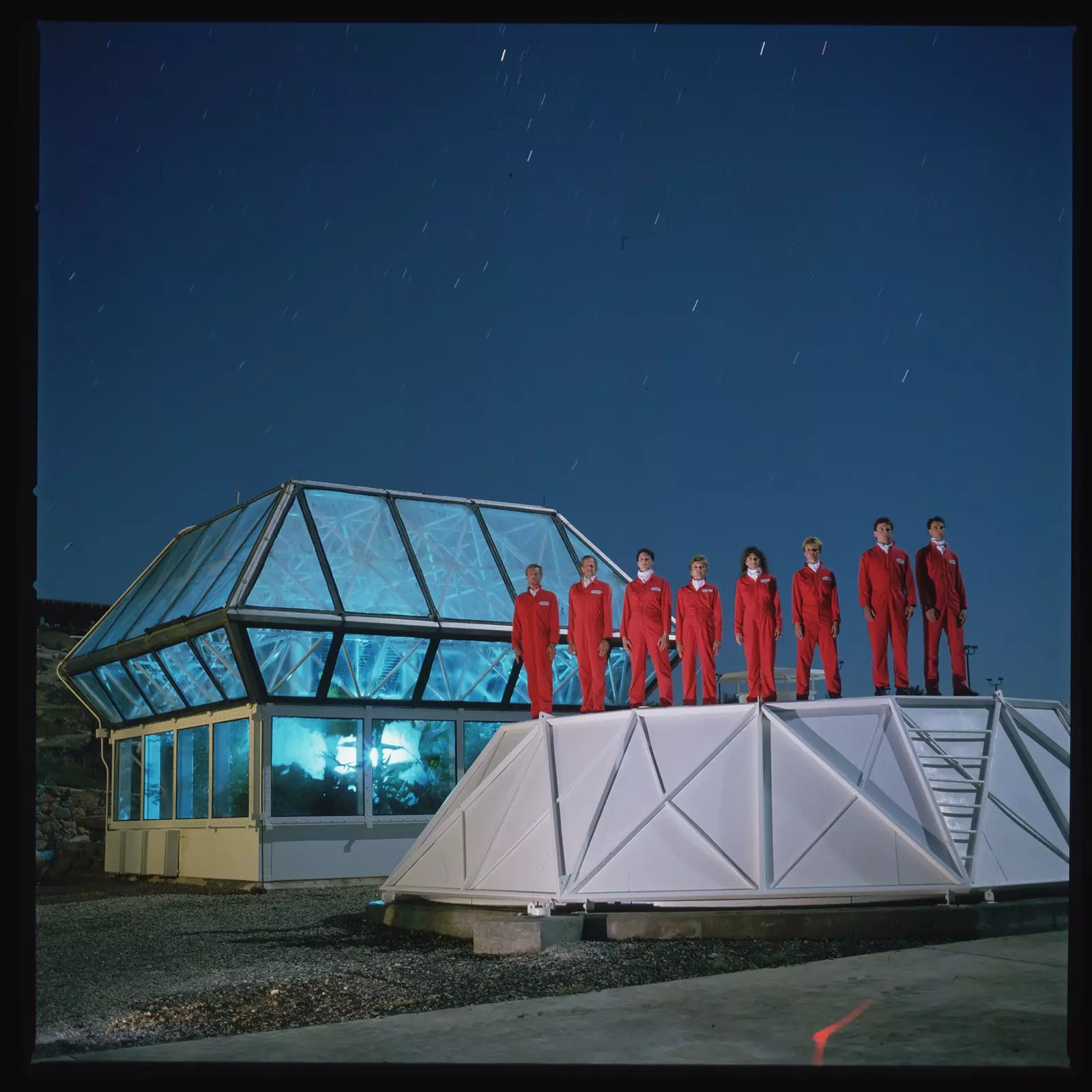
Candidates of the Biosphere 2 experiment, in the Arizona desert.
“As I write this from California, I must wear an N95 mask, both to protect myself from Covid-19 and from the particles caused by the massive wildfires.” They are words of T.C. Boyle (Peekskill, New York, 1948), famous author of The Little Savage –brought to the screen by François Truffaut in 1969–, Road to Wellville (which was adapted for the cinema as The Bath of Battle Creek) and The Women, about the life and loves of architect Frank Lloyd Wright, in response to our questions about his new novel, Los Terranautas (Impedimenta). He speaks to us from his home in Santa Barbara, decked out for the weird dystopia in which we have been immersed for months.
His last work to date, which has had us trapped for the last few days until late at night, tells the true story of the Biosphere 2 experiment, which took place in 1994 in the Arizona desert. Eight scientists – four men, four women – confined themselves to a glass facility of 150 million dollars near the city of Oracle. It was intended to be the prototype of an extraterrestrial colony, in which they would demonstrate that they could live isolated from the rest of the world in a self-sufficient way.
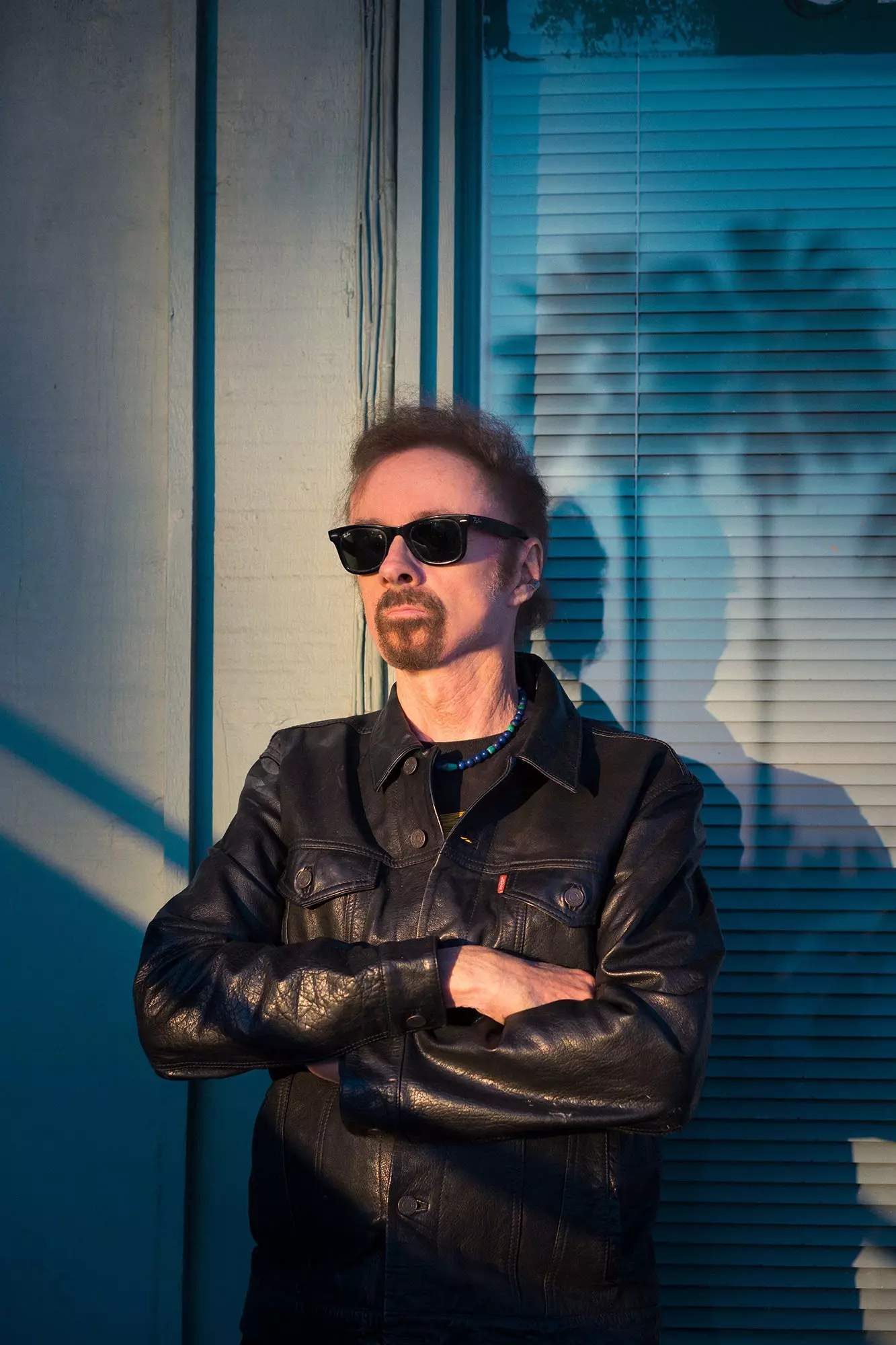
The writer T. C. Boyle, author of 'The Terranauts'.
The dome was the work of Jeremiah Reed, an ecovisionary known as D.C. (an acronym for God the Creator) who conceived the experience as a planetary reality show for the sake of ecology (or the other way around). What happened there was of scientific interest, of course, but it also had all the ingredients to become a skeptical and wonderful novel signed by this North American, who defines himself as an environmentalist.
TC he didn't know any of the original 'biospheres', but he did read his books and all the documentation on the workings of Biosphere II. "Of course, I visited the facilities at Oracle, which is still a tourist attraction. I invented all the characters, which are not based on the real participants at all -he stresses-. This is a work of fiction though the details of the internal workings are faithful to the experiment. I find them fascinating and wanted to share it with my readers. Now, California is on fire and global warming threatens all of humanity: will we all have to live under glass one day?
“I am passionate about how we, an animal species, interact with the earth's ecosystem. From the first time I heard about the Biosphere 2 experiment I wanted to write about it. After publishing other novels on this theme, such as A Friend of the Earth (2000), about global warming, and When the Killing's Done (2011), about the impact of invasive species, I threw myself into it."
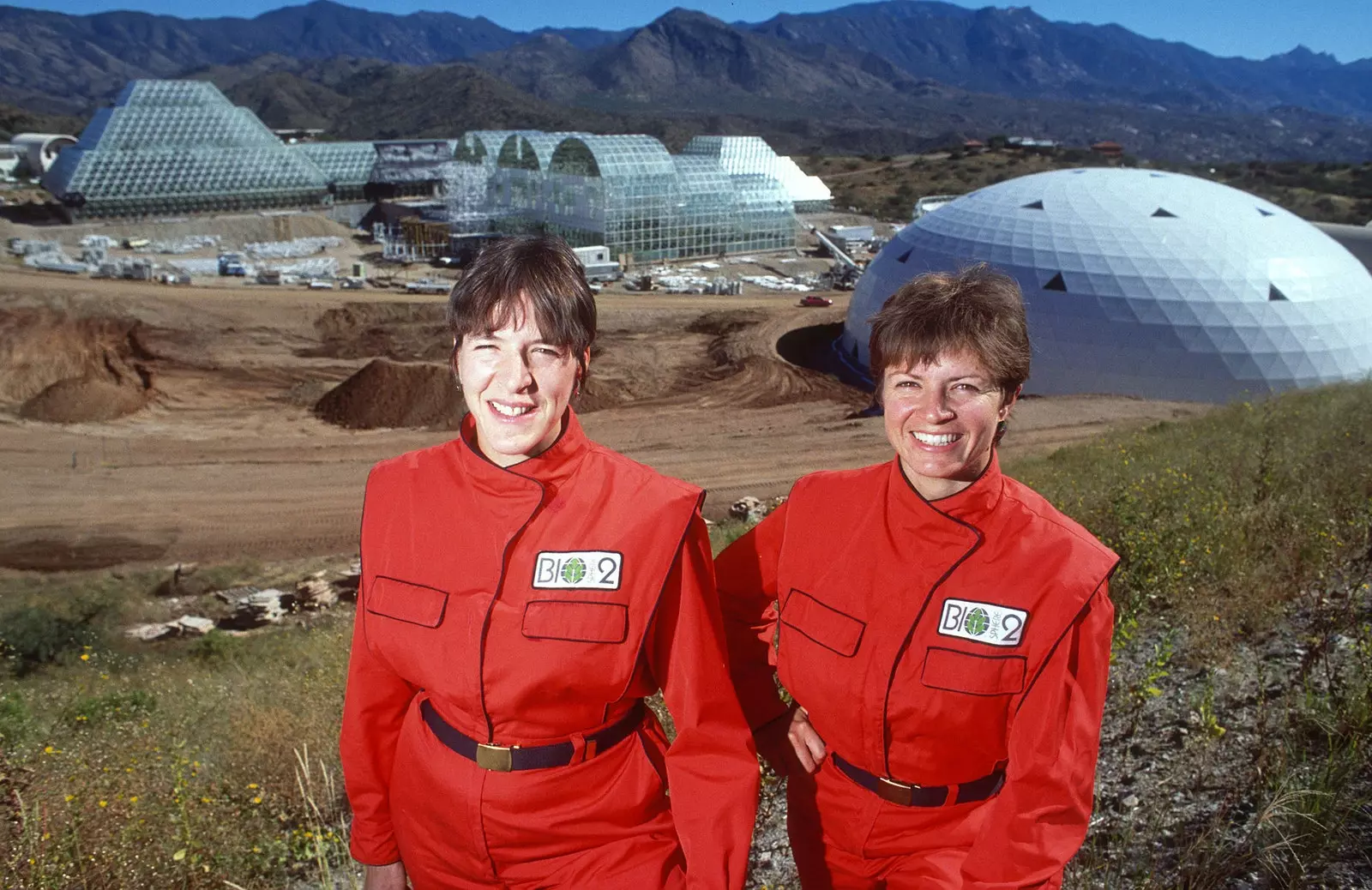
Sally Silverstone and Jayne Poynter in Biosphere 2, in 1990.
"In The Terranauts I wanted to capture our attempts to build an alternative biosphere because the one we inhabit is dying”, he recalls for us. The environmental hook is there, although the idea of delving into the experiences of eight people 'locked up' and exposed to public opinion also has its crumb. “One of the epigraphs in Sartre's No Exit (Behind Closed Doors) suggests this. In the theater, the characters are trapped by the confines of the stage; here, with these eight characters locked up together for two years, their confinement is essentially theatrical to me.”
the intense circumstances confronted their protagonists with the effects of isolation, hunger, lack of oxygen, and generated, yes, camaraderie, but also discussions, misunderstandings, quarrels that would end up in court, and all seasoned with passionate alliances, encounters and even romances. "It was kind of like a reality show before these were invented," he adds. The terranauts, as I call them in the novel, they became famous, celebrities in their own right. The experiment was criticized as a publicity stunt: there was no thesis to prove or disprove, but rather it was a 'let's put these elements together and see what happens'. However, I think it was valid to study how ecosystems work. NASA still carries out similar undertakings.” Their own bodies and their evolution were studied to draw conclusions about the effects of isolation, so the failure of the company was relative.
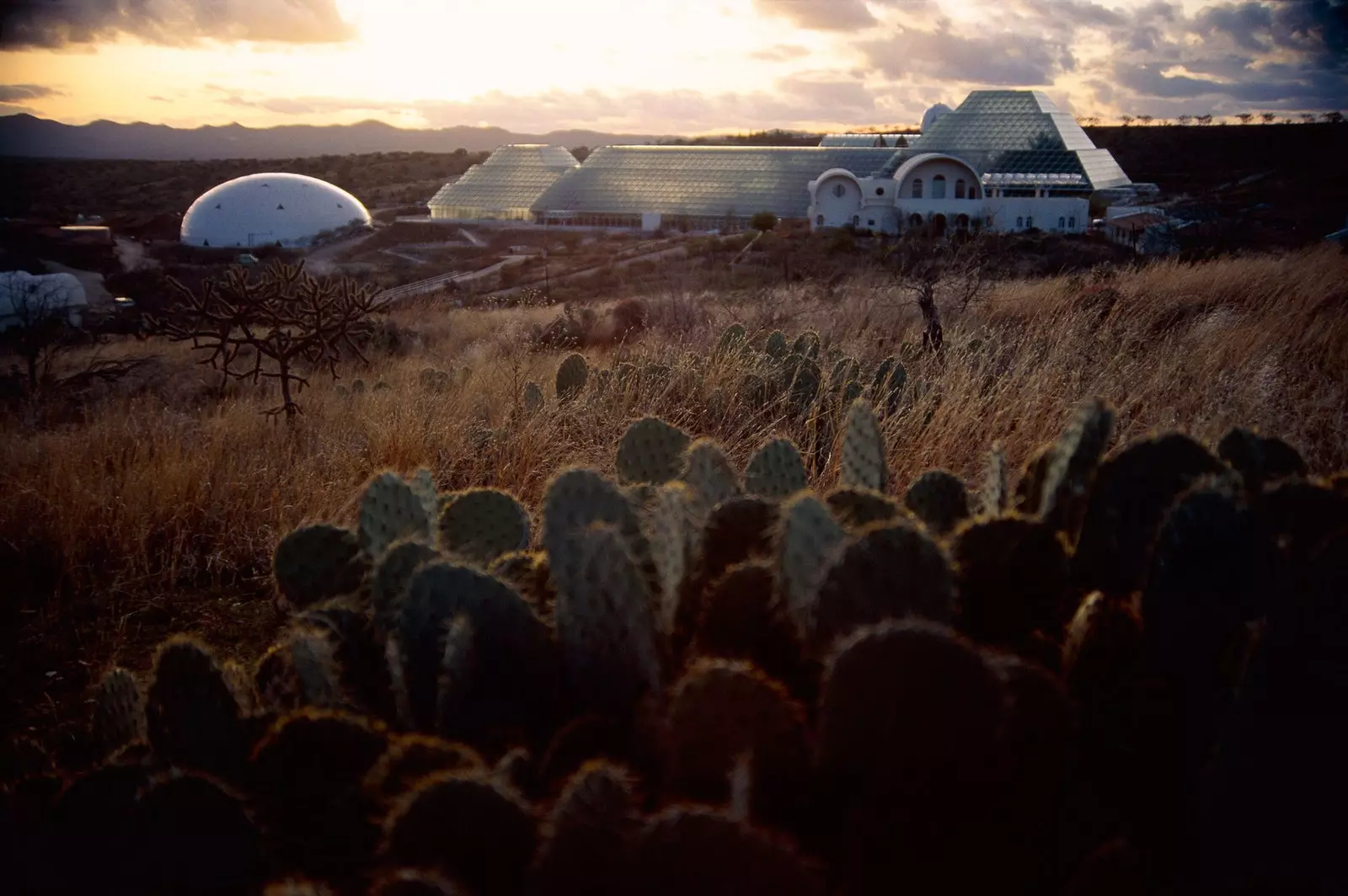
The scientific facilities now belong to the University of Arizona.
This 'human zoo', which had already had a first 'pass' years before, had on its second attempt millions of visitors and many conclusions of interest for the life support of space missions, but its participants went from being the promise of 'a new world is possible' to practically a laughingstock after a somewhat catastrophic ending (we do not want to spoiler).
Ecology was the main objective of the experiment; Today the same problems continue to concern us, some with greater intensity, but it would seem that we are incapable of giving an answer even if this is a kind of new religion. “We live in a mysterious universe and have developed inquiring minds because the essential question of our being remains unanswered by either science or the religions we have invented. In the final analysis, all life is dependent on other life and exists to replicate it. There is no more”, says the writer, convinced that we will establish colonies in the future on other planets, but not self-sufficient. "What we have to do is take care of the only biosphere we know, this one, instead of destroying it," he says.
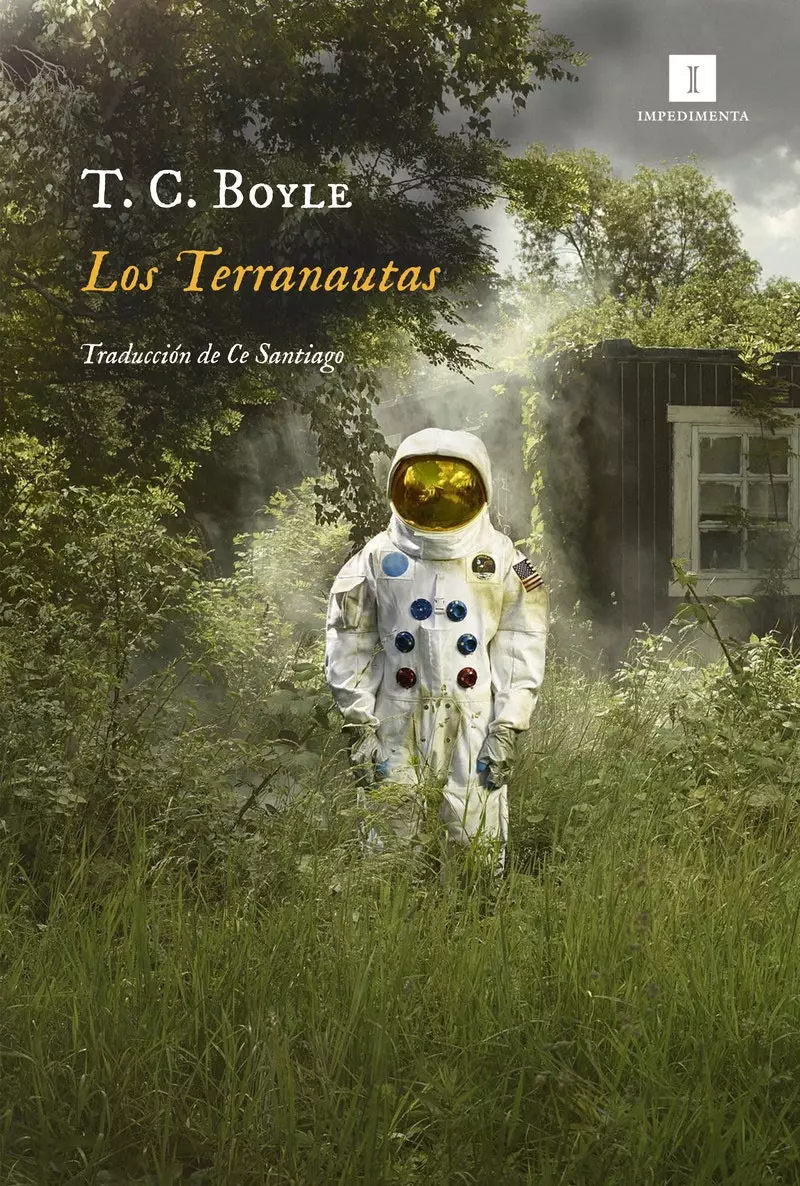
Cover of the book 'The Terranauts', by T.C. Boyle.
It has already been written about the novel's sense of humor, although it seemed somewhat melancholic to us. “Melancholy is the human condition. Regardless of our joys, sensual and intellectual, there is always the sentence of death hanging over our heads. And now that death sentence extends beyond each of us individually to incorporate the entire species. That's why Linda Ryu is my favorite character, so wrapped up in his own competitive fury that she loses sight of the true limits of existence, whether inside or outside the Ecosphere”, he answers us.
Sex also has a very important role in the plot, although the authentic 'terranauts' apparently agreed not to frivolize or give details to the media of what had happened in there. “Sex is the most important thing for any species (even if it reproduces by parthenogenesis). Naturally, we tend to make a big deal out of it, but in fact we have less free will than we think. and we are driven, like all animals, by biological impulses. Four men, four women, locked up together for two years, what do we imagine they're going to do?” says Boyle.
The portrait of the less honorable motivations of the characters (vanity, envy, ambition...) leads us to think that perhaps the author has a very critical perspective of human beings. “I am a compassionate man, but I tend to take a 'Swiftian' view of humanity on the one hand and a biologically deterministic one on the other. (You can see it in my novel The Inner Circle, about sex researcher Alfred C. Kinsey)”.
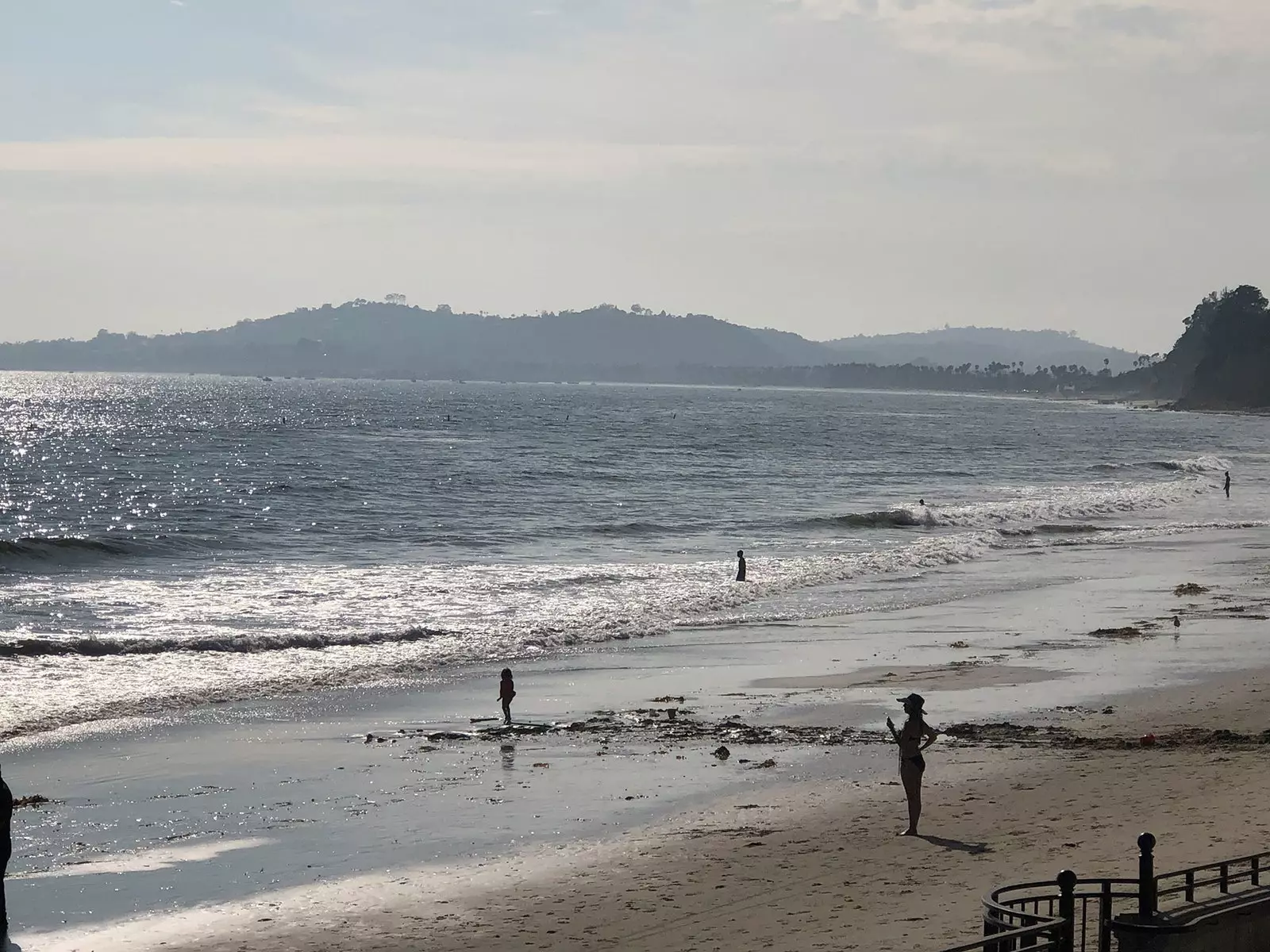
Photo taken by the writer in Santa Barbara, California.
Is this a book made to invite reflection or is it pure entertainment? about those futuristic facilities –1.27 hectares, which since 2011 have been owned by the University of Arizona– and the adventures of its controversial inhabitants? “I am an artist, I make art. How people see it is something I have no control over,” stresses T.C., who discovered creative writing as a student and has dedicated his life to it ever since. “My literary heroes are playwrights and novelists of great ingenuity and complexity, with great visions of the world, such as Günter Grass, Gabriel García-Márquez, Miguel Ángel Asturias, Robert Coover, Thomas Pynchon, Italo Calvino and many, many others”.
LOVE FOR NATURE... AND FOR PEOPLE
We take the opportunity to ask the author to take a self-portrait in his surroundings and a traveling 'photo'. “I love the town where I live, next to Santa Bárbara. I am near the sea, which moderates the climate, I keep my windows open year-round and at the same time I can see the Santa Ynez Mountain Range looming behind me.” Boyle details us. “I like to walk to the town to enjoy its life, restaurants and bars (or I did, before the coronavirus pandemic), and the beach and mountain trails are close at hand.”
The trips to promote his books have led him to have friends everywhere, which is what he values most, and to discover the main European cities and some lesser known ones, such as the German Saarbrücken. “Barcelona is a joy, just like Rome, Paris, Berlin, London, Munich, Dublin. I believe that my favorite is Zurich, because of its stunning natural surroundings and the way the Limmat River makes me feel when I walk along its banks.”
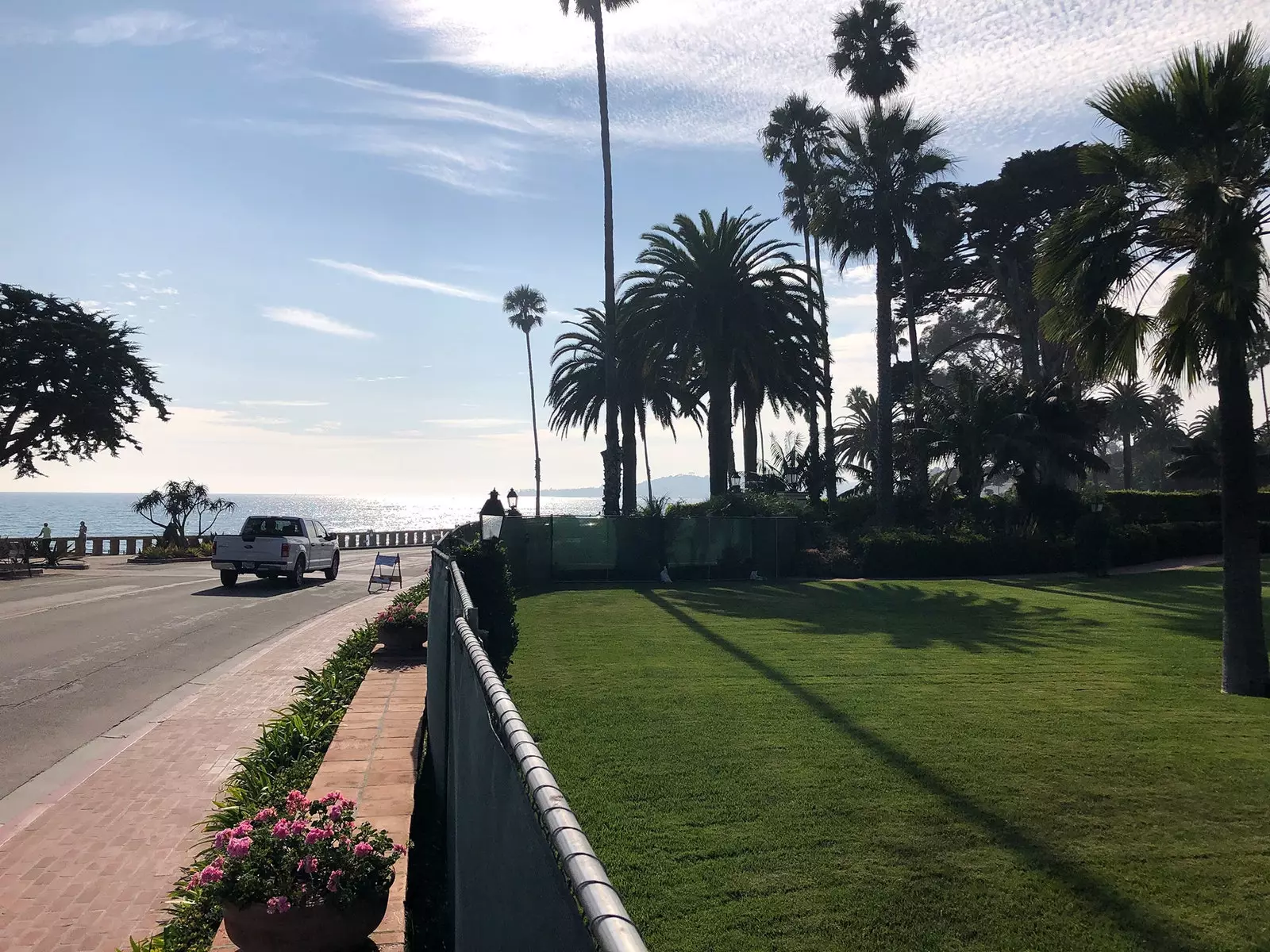
Based in Santa Barbara, T.C. Boyle is passionate about nature and road trips.
The hotel that surprised him the most was a stable in Flores, Guatemala, where he had to sleep on straw. “When I'm on tour, though, I need a little more comfort,” he jokes. “If I don't have to travel for professional reasons, there is nothing I like better than getting in the car and taking a trip up the California Coast with my wife, staying in small towns, eating at local restaurants, drinking at the bars, and finding out who lives there And what do you think about the state of the world?
"Just mentioning it -he concludes- all kinds of memories and longings come to mind. The first thing I will do once we have the vaccine will be drive down Highway 1 to Carmel and then to San Francisco, to enjoy the scenery and mingle with real, flesh and blood people.”
